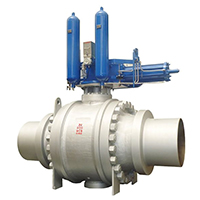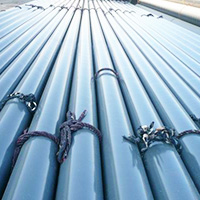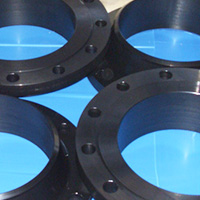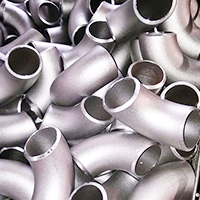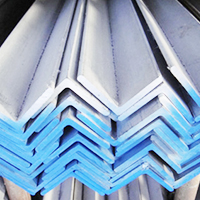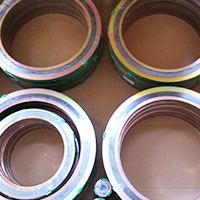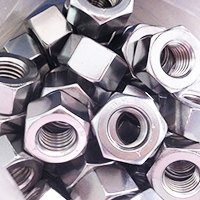Magnetic particle Inspection: Non -Destructive testing of macroscopic defects (cracks, non-metallic inclusions, etc.) on or near the surface of ferromagnetic materials such as iron and steel using very fine ferromagnetic powder (usually powder of magnetic iron oxide).
Non Destructive Testing:A method of inspecting material for defects without damaging the object to be inspected.
Ultrasonic Testing:Nondestructive testing of metal bodies for internal defects by ultrasonic examination.
Eddy Current Inspection: Nondestructive testing using eddy current phenomena.
Fluorescent Magnetic Particle Inspection: Magnetic Particle testing is performed using ferromagnetic powder coated with a material that fluorescently emits ultraviolet light.
Polishing:The operation of smoothing and shining the surface on which metallographic analysis is to be performed.
Etch Pit:A regularly shaped pit formed by deep chemical etching on a finely polished metal surface.
Hot Stage Microscope:A microscope used to study metals or alloys at high temperatures
Electron Microscope:A microscope that uses a fast-moving electron beam instead of a visible light beam as a working medium
Xray Radio-graphic Inspection: Nondestructive testing of internal defects( Such as cracks, Porosity, Shrinkage etc.) in metallic materials or work pieces using X-Ray transmission.
Y Ray Radio graphic Inspection: Nondestructive testing of metallic materials or work pieces for internal defects such as cracks, porosity, shrinkage, etc., using Y - ray transmission.
Fluorescent Penetrant Test: Using fluorescent penetrants penetration testing. "fluorescent liquid penetration inspection" is added after the ultraviolet irradiation can emit fluorescent penetrants, coating on the surface of the were seized, penetrating fluid that is seeping into the defect, then remove the net residual liquid penetration on the surface, and then at 330 main 30 nm wavelength for ultraviolet irradiation, defect and emit fluorescence, Display an image of the defect.
Transgranular Fracture: A fracture that occurs inside a crystal passing through a polycrystalline material.
Intergranular Fracture:A fracture along grain boundaries
Cleavage Fracture:Fracture along a given crystal plane - cleavage plane (one of the modes of transgranular fracture)
Shear Fracture:A fracture along an interface of maximum shear stress
Fatigue Fracture:Fracture occurring under repeated or alternating stresses below the yield strength of the material.
Delayed Fracture:The metal is subjected to static stress which is not sufficient to cause it to break directly but over time it breaks
Fracture Surface:The surface of a fracture or rupture in a metal part
Cup Cone Fracture:After ductile fracture (ductile fracture), the fracture on one side of cylindrical tensile specimen is cup shaped, and the fracture on the other side is cone shaped, both of which are collectively called cup cone fracture
Silky Fracture:Very fine grain fracture with smooth surface and silky luste.
Fibrous Fracture:The ductility of a metal or alloy is large enough that the grains are elongated before fracture so that the whole looks like the fracture of many fibers.
Lamination Fracture:The non-metallic inclusion is extended into a thin layer of metal material perpendicular to the fracture of the rolling surface during rolling
Conchoidal Fracture:A shell - like fracture consisting of concentric circles.
Metallographic Examination:The analysis, study, or examination of the macroscopic and microscopic structure of a metal or alloy by metallographic mean.
Optical Microscope:A microscope that uses reflected light to study the structures of metals and alloys that are not transparent to visible light.
Heating furnace Reheating Furnace
Flame Furnace
Circular Rotating Furnace
Annealing Furnace, Annealer
Vacuum Annealing Furnace
Pickle line processor:Strip steel is continuously acidic through several acid tanks.
Extrusion Roll
Roll Table
Extension Roller Table


